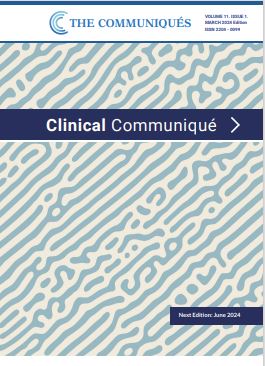About the Communique
The Clinical Communiqué is an electronic publication containing narrative case reports about lessons learned from Coroners’ investigations into preventable deaths in acute hospital and community settings. The Clinical Communiqué is written by clinicians, for clinicians.
Editorial
Associate Professor Nicola Cunningham
Welcome to the first issue of the Clinical Communiqué for 2024. In this edition we are looking at the challenging aspects of determining fitness to drive in older drivers. Advancing age is associated with co-morbidities that cumulatively increase driving risk and will affect a person’s fitness to drive. Stroke, dementia, sleep disorders, mobility issues, hearing and vision impairment may warrant cessation of driving. The two cases in
this edition demonstrate two main risk profiles in older drivers – the driving risks when a patient is bodily capable but easily disorientated, and the driving risks when a patient is mentally sharp but physically slow. A diagnosis of dementia or a physical impairment does not automatically signify a patient should lose their licence, but it does herald the need for notification to the licensing authority and an assessment of fitness to drive.
This is not the first time The Communiqués team have shared important learnings from coronial cases about fitness to drive. We explored the theme in a previous edition of the Clinical Communiqué (September 2015 Edition Volume 2; Issue 3) where we featured three case summaries and an expert commentary from Australia’s leading forensic medical experts in traffic medicine. The edition highlighted the complexities surrounding driving ability in patients with a range of chronic medical conditions, and the role of their treating practitioners. In those cases, hypoglycaemia, seizures, and visual impairment were each found to be contributing factors in fatal collisions. Associate Professor Morris
Odell’s expert commentary on the complexities of considering fitness to drive in the context of the effect of the condition on the ability to perform the tasks of driving, and the jurisdictional differences in reporting, is as important and relevant today as it was then.
Although the focus this time is on older drivers and how to ensure driving safety in the setting of age-related cognitive and physical changes, the fundamental messages are the same:
1. A person’s suitability to hold a licence is a question that should be asked early in a therapeutic relationship.
2. It is crucial to perform a comprehensive driving assessment with input from multidisciplinary sources about a person’s medical conditions – their abilities and limitations, and their driving history.
3. Legal obligations and licensing guidelines should be understood by all health professionals. As Dr Gaya cogently wrote in the previous fitness to drive edition, “Driving is not a right, but a privilege…subtle effects of a fairly common medical condition in a driver can disastrously
impact on the driver and other road users. For this reason, it is incumbent on both drivers and their healthcare professionals to further extend their therapeutic relationship to consider the impact of their conditions and treatments on driving.”
As well as the importance of understanding the steps involved in assessing driving ability in a patient, health professionals must also appreciate the key impacts of a loss of licence for a patient. It represents a loss of independence, with reduced mobility, confidence and autonomy, potentially leading to social isolation and depression. In employed patients this can also have a negative economic impact.
Dr Angela Sungaila returns in this latest edition with a case summary, and the expert commentary is by another leading expert in the field of fitness to drive, Professor Dimity Pond who is a general practitioner, researcher, and educator with a special interest in dementia.
Professor Pond’s commentary shares insights about fitness to drive in older drivers from the perspective of the patient, the health professional, and the system. Her gentle and proactive approach to the issue is one that we should all adopt for our patients. Don’t avoid the conversations and do explore what assistance and limitations might need to be put in place. Driving is an activity that benefits every one of us, so we all play a role in keeping road users safe.


